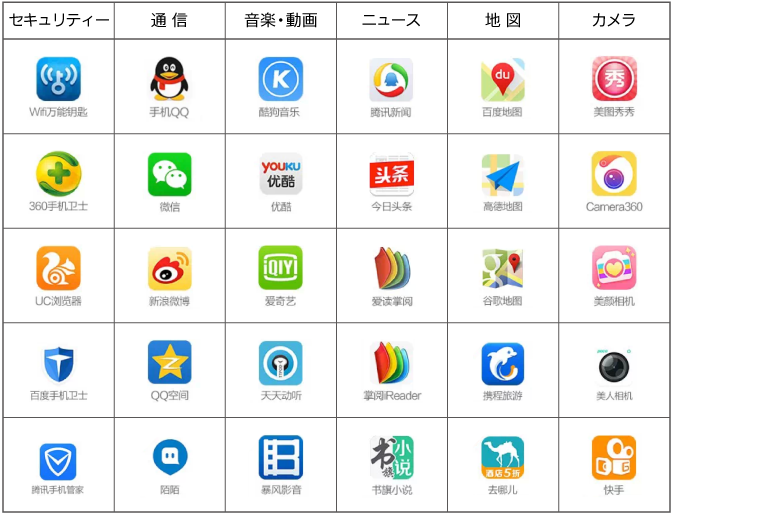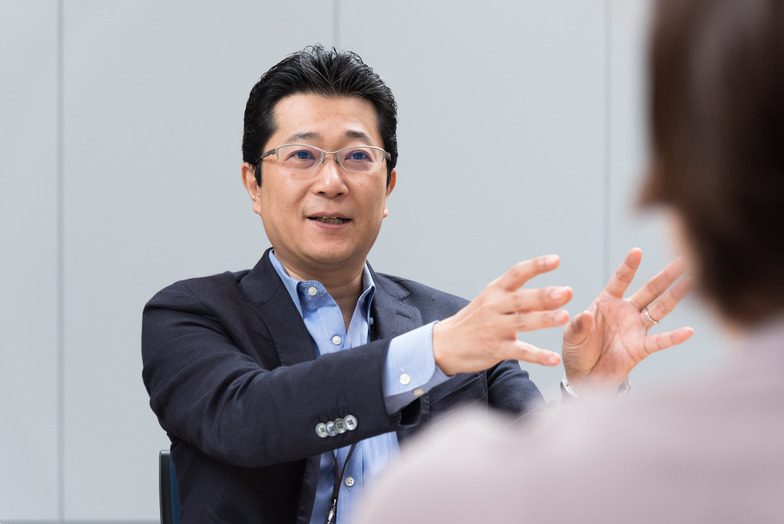The inbound business continues to flourish as we approach 2020. This series will explore its current state from multiple angles with experts and Dentsu Inc.'s "Inbound Business Team," offering hints for solutions.
This time, we feature Shizuo Harada of Landream. Formerly CEO of TripAdvisor Japan and now active as an inbound business producer, Mr. Harada shares insights on the real dynamics of Chinese tourists and the approach to inbound marketing.
Companies that pioneered inbound tourism are now facing challenges
Takahashi: Ms. Harada, you left TripAdvisor last year and are now producing and consulting on inbound business at Landream. When you were at TripAdvisor, it was precisely the moment inbound tourism was skyrocketing. I feel TripAdvisor was one of the catalysts for that surge.
Harada: That's right. There was an atmosphere like it was the "first year of inbound tourism." Several years have passed since then, and recently, many companies are considering "resetting their inbound strategies." Companies that pioneered inbound initiatives have gone through a full cycle and are now wondering, "Is this really the right approach?" So, I work with companies to take stock, or what I personally call a "health check."
Takahashi: What kinds of issues do companies most commonly struggle with when implementing inbound strategies?
Harada: By far the most common issue is marketing-related, particularly for the Chinese market. For example, we often get inquiries like, "We're seeing more Chinese customers, but our website traffic from China remains stuck at 2%. What's going on?" But when we dig deeper, it turns out they haven't actually tested access from within China. They've only tested site speed and functionality within Japan's environment. When you actually try accessing the site from China, pages might not load at all, or take forever to load... Factors like China's censorship system also play a role.
Takahashi: Even if you think you've done thorough prep work, it's still confined entirely within Japan.
Harada: Exactly. But when considering global marketing, China is so different it essentially becomes its own category—separate from "the rest of the world." Look at search engines: globally, Google dominates, but in China, it's Baidu. Social media? Globally, it's Facebook and Instagram, but in China, it's WeChat and Weibo. No matter how multilingual your site is, it might not rank high on Baidu or even be inaccessible within China.
Usability and UX (user experience) also reflect national characteristics. For example, in Japan, airports and other spaces use floor markings like directional arrows and signs. But Chinese people don't tend to look down while walking, so signs need to be large and positioned high up to catch their attention. Even when creating a single app, you need a solid understanding of Chinese UX. When Japanese companies try to handle all China-focused initiatives themselves, they often fail to recognize these cultural differences.
The Crucial "Courage to Let Go" in Inbound
Takahashi: By the way, what apps are popular within China?
Harada: Without a doubt, the most popular are WeChat and Weibo. What's growing now is WeChat Pay. You can pay for daily necessities, utilities, everything with it. It also handles revolving credit card payments and person-to-person money transfers. In China, there's a custom of giving cash as a small token of thanks or a gift to friends, and they do that through this app.
Takahashi: Cash as a thank-you gift for friends! That's unimaginable by Japanese standards.
Harada: Cash is even used as prizes in corporate promotions. Apps like WeChat have steadily penetrated the market precisely because they've evolved to fit local culture and environments. Plus, Chinese apps have excellent UX. These cultural aspects vary completely from country to country.

Popular apps in China. Overwhelmingly Chinese-origin
Takahashi: That's precisely the key to inbound marketing. Americans, Australians, and Chinese all have their own lifestyles – there's no such thing as a "one-size-fits-all global strategy." It's crucial to clearly define your target audience. Conversely, that means you need the courage to let things go.
Harada: Absolutely. Half-hearted approaches won't resonate anywhere. Recently, more companies have started offering services specifically targeting China. For example, Daimaru Matsuzakaya now accepts WeChat Pay, and Shinsei Bank partnered with WeChat.
Takahashi: Major convenience stores also ran ads exclusively in Chinese to promote their ATMs accepting overseas cards. Seeing ads in Japan that used no Japanese at all felt like a new approach.
Harada: Hakone Open-Air Museum even aired a Chinese-language TV commercial in Japan. I think it's necessary to challenge ourselves with that kind of perspective, or approach from a different angle.
Hit content is "art" and "animals"
Takahashi: Chinese inbound tourism in Japan has shifted from the previous "spending sprees" to "experiences." What will be the future trends and themes within this?
Harada: I see two key words: "activities" and "art." Since "experiential" activities are now well-established and frequently discussed, I'd like to focus on "art" here.
In terms of art, Japan, especially Tokyo, is incredibly fortunate. When famous overseas orchestras or ballet companies tour the world, they always include at least one performance in Asia. When deciding where in Asia to perform, Tokyo is often chosen. This means that coming to Tokyo allows you to experience a wealth of cutting-edge art from around the world. This alone is a significant inbound business opportunity.
From my personal experience, whenever I take overseas friends to Japanese art museums, they are 100% satisfied. At the Hakone Open-Air Museum, even children can enjoy moving around freely. Then there's the Pola Museum of Art, the Yamagata Museum of Art... Hundreds of paintings by masters like Monet and Picasso are exhibited in rotation, and you can view them up close at your leisure.
Takahashi: That's actually incredibly valuable. Moving slightly away from art, I heard that right now, the most popular item for big-spending tourists in Nara is "deer crackers." Someone from Todaiji Temple mentioned that one person bought about ¥70,000 worth of them. They apparently bought around ¥70,000 worth of these crackers, which are about ¥150 per set, and just kept feeding them to the deer (laughs). For Chinese tourists, deer seem to be considered a kind of lucky charm connected to financial fortune.
Harada: That's right. TripAdvisor clearly shows this trend too—animals are a huge draw for inbound tourists. Monkeys bathing in hot springs are another example. Whenever there are goldfish or carp in a pond, you'll always find foreigners feeding them.
Deer are like divine creatures to Chinese people. The deer in Nara can actually be touched, and they're not in forests but on regular streets and in parks. This is a very strange sight for Chinese people. It's the same as foreigners being surprised by Shibuya's scramble crossing.
Takahashi: In Nara, they've responded to the popularity of these deer by multilingualizing the safety notices warning visitors not to be bitten by them.
Harada: Multilingualism is a crucial theme for future inbound tourism. For example, when translating explanations for artworks, the knowledge base Japanese people have differs from that of foreigners. The key is whether we can break it down effectively. Then there's the issue of tone. Often, the translation isn't factually wrong, but the tone feels off. You might have a really fun website, but the translation comes across stiff and formal. I've seen "Shitamachi" translated as "working-class district," but that completely changes the nuance. If it says "Sensoji Temple in the working-class district," it doesn't exactly make you want to visit (laughs).
Takahashi: It should have more of a poetic feel, like "a town with many traditional Japanese houses" or "an old townscape," right?
Harada: When these kinds of translation errors happen, not only does the message get lost, but it also leads to SEO gaps. Nobody searches for "working-class district," so of course it won't show up.
Fundamentally, Japanese people just aren't good at self-promotion. Take that art museum earlier—it's genuinely appealing material for inbound tourism, yet its value rarely gets communicated overseas. For example, for Japanese spots to rank highly on review-based platforms like TripAdvisor, we need far more reviews posted. Scoring-wise, Japanese tend to give 3s or 4s. I think that's partly national character, but I wish people would freely give 5s when they genuinely think something is great, like overseas visitors do.
Furthermore, Japan lags far behind globally in online promotion. I often feel the budget allocation between print materials and online is severely imbalanced. There's also a mistaken perception that online initiatives are cheap. But if I were a traveler, I'd definitely search online for information rather than rely on pamphlets. So why not invest more in online strategies? We have great content; it's just a matter of how we present it. It's such a waste.
( To be continued)









